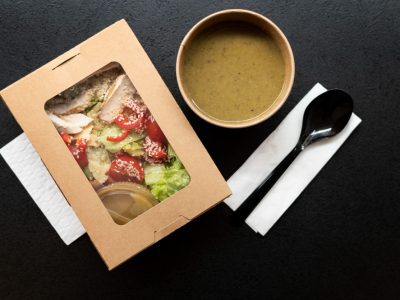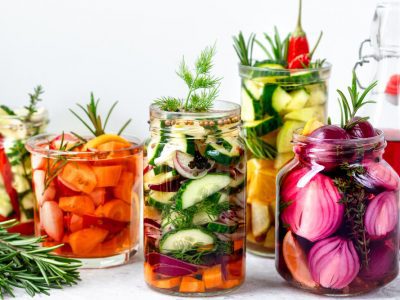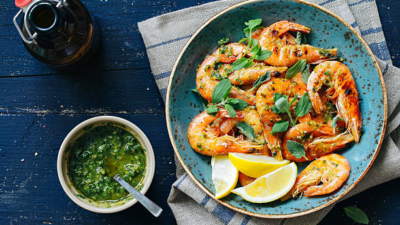Introduction to Cloud Kitchen Business
A major shift is occurring in the restaurant industry, and cloud kitchens are leading the charge. These innovative business strategies are revolutionizing the food industry. They are often called virtual restaurants or ghost kitchens. Unlike traditional restaurants, which rely on physical eating spaces, cloud kitchens are purely manufacturing facilities that fulfil online meal orders for delivery and takeaway. Businesses can now concentrate on providing great meals and efficient delivery systems because this streamlined process eliminates the need for costly front-of-house operations.
Online meal delivery services, such as HOGR delivery, have greatly sped up the expansion of cloud kitchens. Cloud kitchens are able to access a huge client audience regardless of location or exposure because of these platforms. You will not find any brick-and-mortar locations of virtual eateries, which are often operated out of cloud kitchens. Because of this, businesses have greater leeway in terms of branding and menu design, which lets them experiment with different cuisines and target certain demographics without the huge financial burden of opening multiple brick-and-mortar locations.
The idea of a “cloud kitchen” is attractive to both newcomers to the food sector who are trying to build their businesses on a shoestring budget and more established chains of restaurants that are seeking to grow their customer base. Among the many advantages of the cloud kitchen model is the ability to quickly adapt menus and branding based on real-time customer data. As this ecosystem evolves, platforms like HOGR delivery are vital cogs, and cloud kitchens will become increasingly important in shaping the future of food accessibility and enjoyment in response to shifting consumer tastes and technological capabilities.
A Guide: Cloud Kitchens: The Future of the Restaurant Industry
Cloud kitchens are revolutionising the restaurant industry with their numerous advantages and possibilities for a better, more efficient future for food businesses. The complexities of this idea are essential knowledge for anybody currently employed or planning to enter the culinary profession.
Ghost Kitchens
The lack of a traditional shopfront or dining area is emphasised by the fact that cloud kitchens are sometimes called ghost kitchens. Efficient preparation and order fulfilment are the hallmarks of these delivery-only enterprises. Depending on the context, “ghost kitchens” can be standalone businesses or shared spaces that accommodate multiple virtual eateries. Productivity gains and cost reductions in customer-facing service operations are the main goals of ghost kitchens. Because of this, we can put more money into producing delicious cuisine using modern cooking techniques and equipment.
Nearby customer demand and efficient transit systems often dictate the ideal sites of ghost kitchens, as they ensure quick delivery through services like HOGR delivery. By doing away with the costs associated with seating, ambiance, and front-of-house staff, ghost kitchens are able to focus on delivering great food quality directly to the consumer at competitive prices. One of the secrets to Ghost Kitchen’s success is their data-driven strategy. This means they are always looking for ways to enhance their menu and operations by analysing customer feedback and order trends via platforms like HOGR delivery.
Dark Kitchens
The term “dark kitchens” is often used interchangeably with “cloud kitchens” and “ghost kitchens,” further highlighting the absence of a traditional dining space. These places are unique in that they are purpose-built to prepare meals for consumption away from the premises. Instead of the traditional front-of-house restaurant layout, dark kitchens are more like industrial kitchens, with an emphasis on speed and efficiency.
Dark kitchens prioritise operational efficiency, allowing them to handle a high volume of orders, even during busy hours when delivery services such as HOGR delivery are available. Dark kitchens put a premium on streamlining the process from order receipt to dispatch to guarantee that food is made quickly and accurately for delivery. Technology plays a crucial role in managing orders, inventory, and delivery logistics in the dark kitchen scenario. The ability to monitor and track orders in real-time is made possible through direct integration with platforms like HOGR delivery.
Virtual Food Brands
Many people use the terms dark kitchens interchangeably with cloud kitchens and ghost kitchens, further emphasising the lack of a conventional dining area. Built or renovated specifically for the purpose of making food to be eaten away from the premises, these establishments are known as food processing plants. In contrast to the more conventional front-of-house restaurant layout, dark kitchens prioritise efficiency and speed through their layout and interior decor.
Dark kitchens can process a large number of orders quickly and efficiently, which is especially useful during busy times when delivery services like HOGR delivery are available. In order to ensure that food is cooked correctly and quickly for delivery, dark kitchens stress on a smooth process from order receipt to dispatch. To keep track of orders, stock, and delivery details in a dimly lit kitchen, technology is essential. Through direct interaction with platforms such as HOGR delivery, it typically provides real-time order tracking and administration.
Conclusion
Cloud kitchens, which encompass innovative virtual food brands, ghost kitchens, and dark kitchens, are undeniably the way of the future for the restaurant industry. Businesses in the food industry can benefit from online delivery platforms like HOGR delivery, streamline their operations, and reduce overhead costs to create a more adaptable and scalable company model. Because of their focus on efficiency, data-driven decision-making, and adaptability to changing client preferences, cloud kitchens are set to become a major force in the years to come.
As time goes on and technology improves, the demand for fast food delivery will likely continue to rise, stimulating innovation in the kitchen and providing consumers with more dining options through delivery services like HOGR. Customers will get access to more selections and, perhaps, cheaper prices in the long run as a consequence of the increased competition and diversity in the food scene brought about by the cloud kitchen model’s lowered entrance barrier for culinary entrepreneurs. With the rise of cloud kitchens and enhanced delivery logistics made possible by platforms like HOGR delivery, the future of the restaurant industry is not only in the preparation of food but also in its effective and timely delivery to clients.
A food enthusiast and a blogger – someone who likes to eat and write about it. I’m passionate about exploring different cuisines and challenging my palette. I give into my food craving regularly and am often on the hunt to find my new favorite food place in town.
















